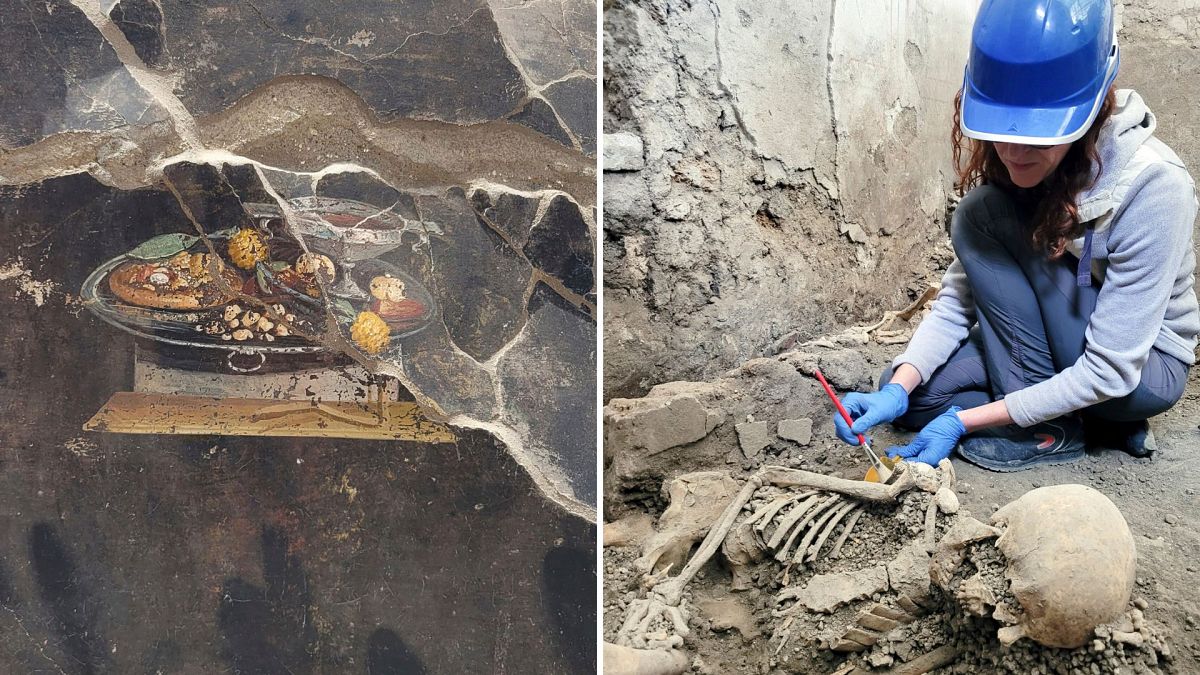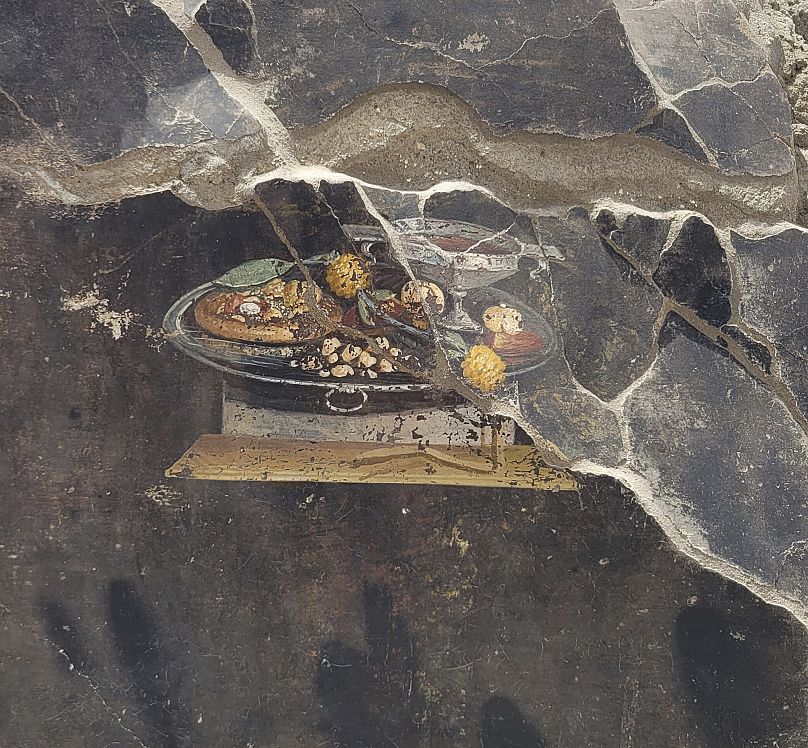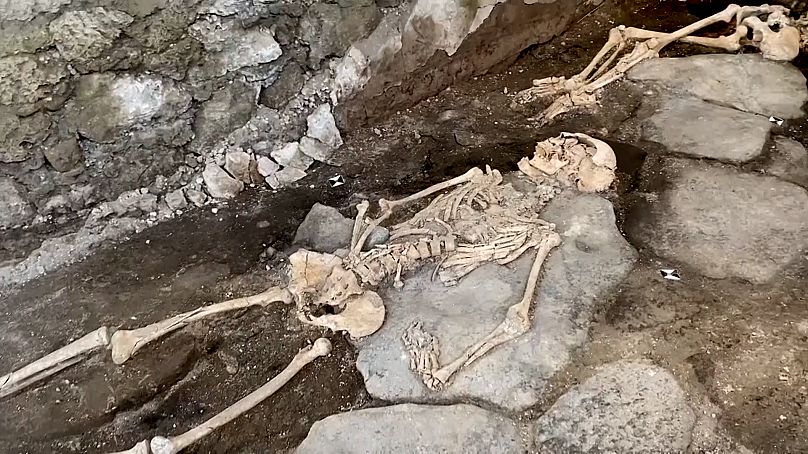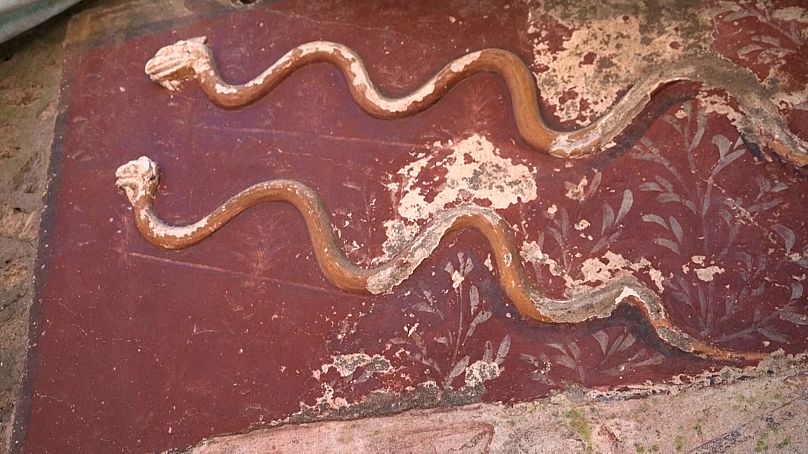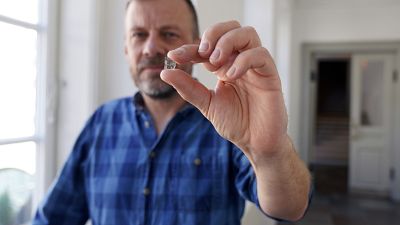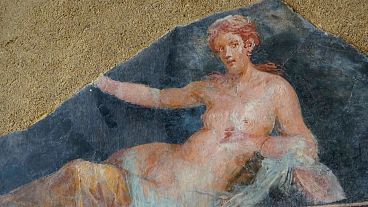The world-famous ruins of Pompeii still have many secrets for us to discover. Recently, the remains of a domus has offered extraordinary new evidence of life in the city before the catastrophe.
Archaeologists working in Pompeii have excavated the remains of a home, unearthing extraordinary evidence of life in the city before the deadly volcanic eruption which brought death and destruction in 79 AD.
The recent findings include the remains of three human skeletons, an oven used for baking, a small shrine that likely held significant religious importance, as well as the charred remnants of a bed that bears testament to the rapid devastation caused by the catastrophe.
Among the most intriguing discoveries are a collection of exquisite frescoes that adorned the walls of the dwelling.
One of these frescoes portrays an image of a very familiar-looking food being served on a metal plate: a pizza.
Unravelling the enigma of ancient "pizza"
Although not technically a pizza and more of a round focaccia with toppings, this recent find is probably one of the more striking depictions of the internationally famous food that has been found in recent years.
Pompeii is a stone's throw from Naples, the city of pizza, but the key ingredients for the preparation of Italy's iconic dish - tomatoes and mozzarella - were not available when the fresco was painted some 2,000 years ago.
Experts believe what's actually depicted in the fresco is a focaccia, covered with fruit, including pomegranate and dates, and finished with spices.
A few metres next to it, there's a large, well-preserved oven, large enough to produce 100 loaves a day.
Some 50 ovens have so far been unearthed in Pompeii, but experts believe this one was likely used by a wholesaler, distributing bread throughout the city, perhaps to the many fast-food outlets for which Pompeii was so famous.
“This house here is probably something in between on the upper (class) side because we have paintings, we have this still life (fresco) here, there are other rooms with frescoes, but there is also a bakery with an oven inside the house, which is unusual for the most upper class elite houses," explains Gabriel Zuchtriegel, director of Pompeii archaeological site.
Echoes of tragedy
Just a few metres from the oven, three skeletons were found lying on the floor, their bones smashed.
Analysis suggests they belonged to two women and a 3-4 year old child who had taken refuge in one of the rooms to escape the eruption then died after being crushed by the collapsing roof.
“They were really badly damaged from collapsing structures from the upper floors of the house. So, you had a really drastic image of broken bones and skulls from this impact of the collapsing building," says Zuchtriegel.
"These people, probably two women and a child, who were hiding here during the eruption. It started raining pumice stones, so the natural response was to find some cover, hide under some roof.”
The unfolding drama of the momentous days in October AD 79 is also unveiled in another section of the home, within what once served as a bedroom.
The bed itself now exists as a charred mass, a result of the raging fire. Its recognition is a challenge, as it retains merely a vague outline, seared hauntingly into the surrounding walls and floor.
Snake covered shrine
In another room, excavators recently discovered the 'Lararium', a magnificent shrine where its inhabitants entrusted their hopes, wishes and prayers to the gods.
It's decorated with two painted stucco snakes, animals that in the days of Rome were symbols of prosperity and good omen, representing a link with the ancestors.
These latest excavations return to a sector in the park last explored in the late 19th century, but only now, for the first time, its entire area and this domus have been revealed.
“It’s not our goal to excavate the entire city which would be very irresponsible because you can only once excavate. Excavations is in some way also form of destruction," says Zuchtriegel.
"Maybe in the future they’ll be capable to get out of that even more information, so we should also leave something for the future," he adds.
Check out the video above for a closer look at the recent discoveries made in the Pompeii domus.
